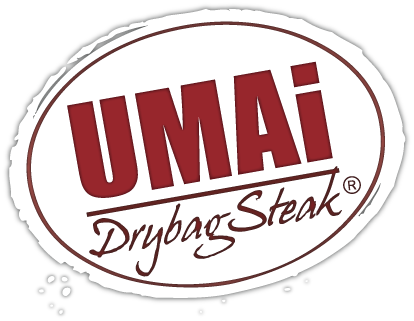Pepperoni is an American dry sausage introduced by italian immigrants in the beginning of the 20th century. It is a cousin of several traditional italian salami products like: Soppressata, Salami Toscano, etc.
Today the popularity of this sausage exceeds any other dry sausage, since pepperoni is the most popular pizza topping around the world. However, the pepperoni that is put on your Domino’s pizza is produced in large factories using very inexpensive ingredients and is cooked prior to drying. It has little to do with its origins as an artisanal dry sausage. We went on a quest to make pepperoni the way it was originally made. Stanley Marianski in his book “The Art of Making Fermented Sausages” had the recipe we were looking for.
This simple and delicious artisan dry sausage can be made with the new UMAi Dry 32 mm Dry Sausage Kit right in the comfort of your kitchen.
Here is the process and recipe:
We used lean pork tenderloin since it is very affordable at our local Costco warehouse (you can use any leaner cut of pork), we also used beef chuck and pork back fat.
You would want to par-freeze all the meat in thin strips before making the sausage. Once the meat is semi-frozen, you can cut it into small cubes in order to feed them into the grinder:
After the meat is cubed you can put it back in the freezer and assemble you cure and spices:
Now we are ready to grind the meat, we like to use a large 6mm (1/4 in.) grinding plate, it makes the texture and drying more even. When grinding the meat you would want to alternate beef, pork and fat to get some mixing in the grinding step:
After all the meat is ground, the cure and spices can be added. We use wooden paddles to mix the cure and spices in since the ground meat is cold and mixes very easily. Warming up the meat with hands makes mixing the cure more difficult.
After the spices and the cure are mixed in we will add the Bactoferm T-SPX starter cuture, which has been previously dissolved in previously boiled and cooled to room temperature water. After the culture has been added we begin to “knead” the sausage mix with hands until begins to stiffen:
We thne put the mixture back into the freezer and get our stuffer ready and prepare the UMAi Dry 32mm casing included in the sausage kit. We will use 4 inch zip-ties to close the ends of sausage chubs:
We stuffed the chilled sausage mix into pair chubs, trying to avoid air pockets. The pair chubs will make it easier to hand the sausage for fermentation:
We used an unused oven as our fermentation chamber. The oven was at room temperature 65-75F. We fermented for 36 hours. The pepperoni sausage will change color from pale orange to bright red after fermentation:
After fermentation the pepperoni is ready for drying. UMAi Dry allows you to dry in any modern household fridge on a wire rack. Don’t use a beer fridge, mini-fridge or garage fridge in the winter. We used our regular kitchen fridge to dry:
The 32 mm UMAi Dry sausage casing dries pretty quickly. In this case it took only 2 weeks for the sausage to loose the 35-40% weight required for dry sausage
This pepperoni exceeded our expectations. The flavor and texture was levels above commercially produced pepperoni. It had a true artisanal character.
Recipe is below:
Traditional Pepperoni
(Slow-fermented Dry Style)
Ingredients per 2.2 kg / 5 lb of meat
Lean beef 670g / 1.45 lb
Lean pork 1375g / 3 lb
Pork fat (Back Fat) 250g / 0.55 lb
Salt 65g / 11 tsp
Instacure #2 5g / 1 tsp
Dextrose 4g / 1 tsp
Sugar 6g / 1 tsp
Black pepper 6g / 3 tsp
Paprika 12g / 6 tsp
Fennel 5g / 4 tsp
Cayenne Pepper 4g / 2 tsp
Bactoferm T-SPX 0.5 g / 1/2 tsp
(dissolved in 2 tbsp lukewarm de-chlorinated water)



















